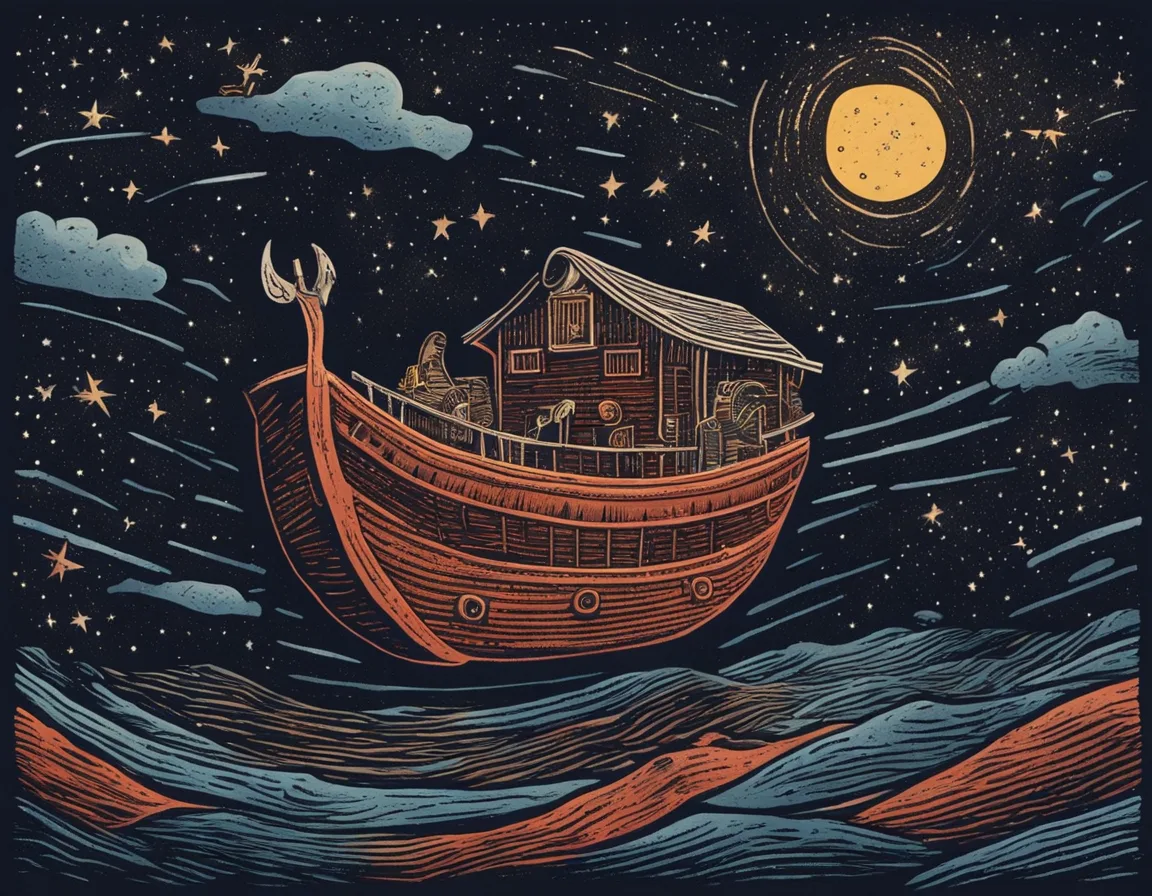The concept of a space ark—a massive, self-sustaining spaceship designed to carry humanity to a new home in the cosmos—has been a recurring theme in science fiction and popular culture. From the biblical tale of Noah’s Ark to modern Hollywood epics like “Interstellar,” the idea has fascinated us for generations. But could we actually build such a vessel? What would be the technical, psychological, and ethical challenges involved? This blog post aims to delve deeper into these complex questions, drawing inspiration from various movies and books that have explored the concept.
Space Arks in Popular Culture
“Passengers”
In the movie “Passengers,” a spacecraft called the Avalon is transporting 5,000 colonists in hibernation pods to a new planet. The journey is supposed to take 120 years, but things go awry when two passengers are awakened 90 years too early. The movie explores themes of loneliness, ethical dilemmas, and the psychological impact of long-term space travel.
“Golgafrinchan Ark Fleet Ship B” by Douglas Adams
In Douglas Adams’ “The Restaurant at the End of the Universe,” the second book in the “Hitchhiker’s Guide to the Galaxy” series, the Golgafrinchan Ark Fleet Ship B is a spaceship filled with “useless” members of society, such as telephone sanitizers and marketing executives*. They are sent on a one-way trip to Earth, which they inadvertently destroy. The story satirizes the idea of a space ark as a solution to societal problems.
*The Golgafrinchans debated the wheel’s shape for years, only to conclude that a triangle was more aesthetically pleasing.
Other Examples
- “Wall-E“: In this animated film, a spaceship called the Axiom serves as a temporary home for humanity while Earth recovers from environmental degradation.
- “Pandorum”: This horror/sci-fi movie features a spaceship, the Elysium, designed to carry colonists to a new world. However, the crew faces terrifying challenges when they wake up with no memory of their mission.
- “The 100”: In this TV series, a space station called “The Ark” serves as humanity’s last refuge after a nuclear apocalypse. However, resources are limited, and tough decisions have to be made about who gets to stay.
Technical Requirements
Structural Integrity and Design
The ark’s size and structural integrity are paramount. Advanced materials like carbon nanotubes or graphene could offer the strength and flexibility required. Radiation shielding is also a significant concern, as cosmic rays pose a long-term health risk.
Propulsion Systems
Traditional chemical rockets are unsuitable for a multi-generational voyage. Ion drives, nuclear propulsion, or even theoretical concepts like the Alcubierre warp drive are more viable options.
Life Support Systems
Closed-loop life support systems involving advanced air, water, and waste recycling technologies are essential. Hydroponic and aquaponic systems could be integrated for food production, and artificial ecosystems might be necessary for psychological well-being.
Energy Sources
Nuclear fusion, if it becomes technologically feasible, could offer a nearly limitless supply of energy. Solar panels and advanced batteries could serve as secondary and emergency power sources.
Automation and Redundancy
Automation would play a crucial role in maintaining the ark. Redundant systems would need to be in place to ensure that a single point of failure doesn’t jeopardize the entire mission.
Psychological and Social Aspects
Crew Well-being
The psychological strains of extended space travel can’t be underestimated. Exercise facilities, social spaces, and even virtual reality environments could be essential for mental health.
Governance and Social Structure
A clear governance structure would be vital. Ethical considerations, such as reproductive rights, genetic engineering, and resource allocation, would also need to be codified.
Education and Skill Transfer
An educational system would be necessary for skill transfer and social stability. Virtual classrooms and AI tutors could play a significant role here.
Ethical Considerations
Selection Process
Who gets to go on the ark? The selection process would raise numerous ethical questions, from genetic diversity to skill sets to social equity.
Interaction with Alien Ecosystems
If the ark is headed to a planet with its own ecosystems, ethical guidelines for interaction would be necessary to prevent harmful contamination.
Conclusion
The concept of a space ark is a monumental endeavor that would require unprecedented collaboration across various fields of science, engineering, psychology, and ethics. While it may seem like a fantastical concept today, the rapid advancements in technology and our growing understanding of the cosmos make it an increasingly plausible scenario. As we continue to push the boundaries of human exploration, the idea of a space ark serves as both a beacon of hope and a sobering reminder of the challenges that lie ahead.

